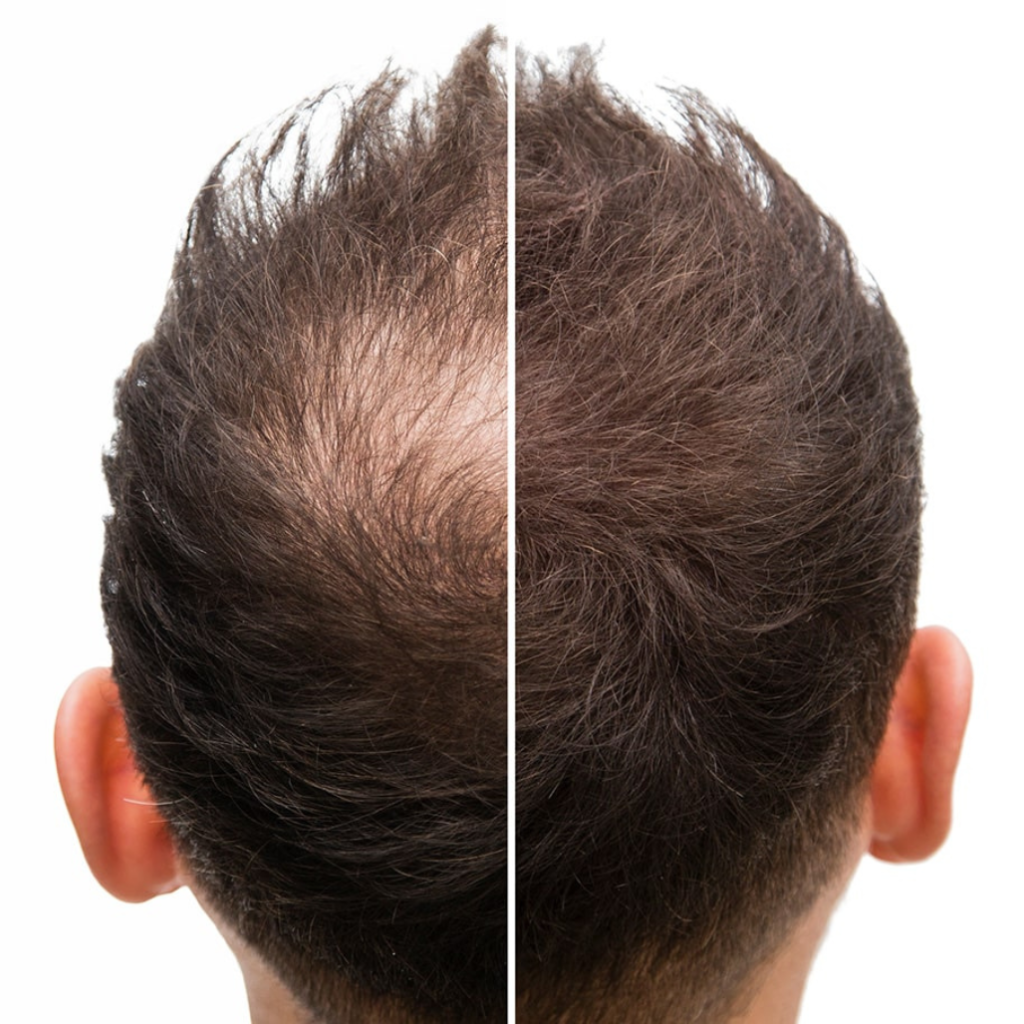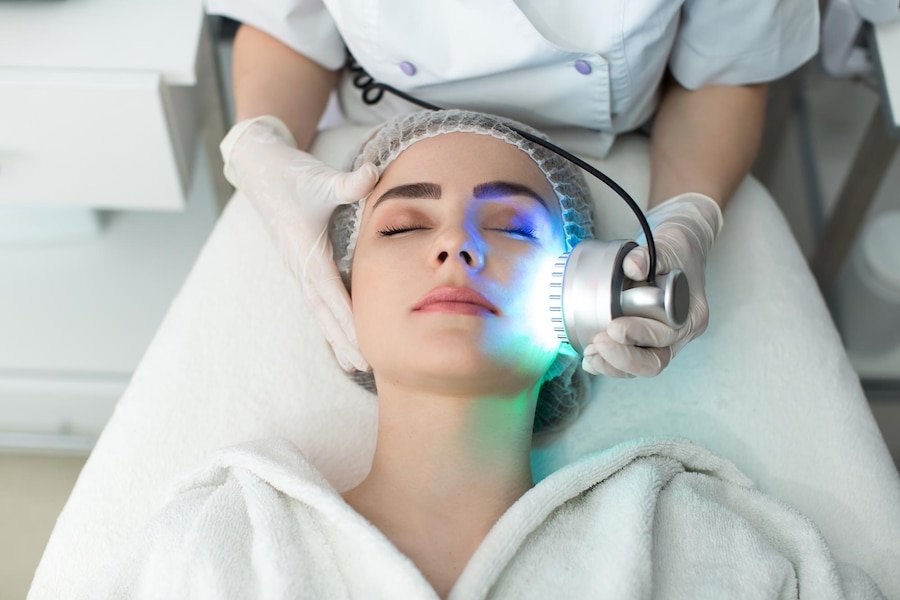What is PRF Treatment (Platelet-Rich Fibrin)
Benefits of PRF Treatment:
- Natural, safe, and non-surgical
- Stimulates collagen production
- Improves skin texture and tone
- Reduces wrinkles, fine lines, and dark circles
- Simple procedure with minimal downtime
- Effects can last several months to a year
Consultation: You’ll meet with a healthcare provider to discuss your goals and any concerns.
Blood Draw: A small amount of your blood is drawn, similar to a regular blood test.
Centrifugation: The blood is spun in a centrifuge to separate the fibrin, platelets, and white blood cells from the red blood cells. Unlike PRP (Platelet-Rich Plasma), PRF doesn’t use anticoagulants, resulting in a slower release of growth factors.
Injection: The PRF is then injected or applied to the target area (face, scalp, etc.) using fine needles. For skin treatments, it may be combined with microneedling to enhance absorption.
Common treatment areas:
- Under-eye rejuvenation
- Fine lines and wrinkles
- Hair restoration
- Acne scars
Since PRF uses your own blood, it has a low risk of allergic reactions or rejection, but some potential risks include:
- Swelling or Bruising: Mild swelling or bruising at the injection sites is common.
- Infection: Although rare, any procedure involving needles carries a small risk of infection.
- Discomfort: Temporary pain or tenderness at the injection sites.
- Asymmetry: In rare cases, uneven results may occur depending on the application.
Complications with PRF are very rare, but they can include:
- Prolonged swelling or bruising (usually mild)
- Infection if the treatment area or instruments aren’t sterile
- Unintended effects like lumps or uneven texture in the treated area (though these are uncommon)
Immediate Aftercare:
- Avoid touching or rubbing the treated areas for the first 24 hours.
- Apply cold compresses to reduce swelling or bruising if necessary.
Activities: You can usually return to normal activities within 1-2 days.
- Avoid intense exercise, alcohol, or blood-thinning medications for 24-48 hours.
- Avoid direct sun exposure to the treated areas for a few days to minimize irritation.
Skincare: Follow any skincare recommendations, which may include gentle cleansing and avoiding harsh products or makeup for 24 hours post-treatment.
The effects of PRF treatment are typically gradual, as the body regenerates new collagen and tissues over time. Most people notice visible results within 4-6 weeks after the procedure. Results can last anywhere from 6-12 months, depending on the treated area and the individual’s skin type and lifestyle.
Multiple sessions (typically 2-3) spaced 4-6 weeks apart are often recommended for optimal results. Annual maintenance treatments may be needed to maintain long-term effects.
How many PRF Treatments are needed for face?
The number of PRF treatments needed for the face typically depends on individual goals and the condition being treated. For general rejuvenation, fine lines, or under-eye dark circles, most people start with 2-3 treatments spaced 4-6 weeks apart. This allows the PRF to stimulate collagen production and improve skin texture gradually. Results become more noticeable over time as the skin regenerates. For deeper concerns, like acne scars or more advanced signs of aging, additional sessions may be recommended.
After completing the initial series of treatments, maintenance sessions are often suggested once or twice a year to prolong the results and keep the skin looking youthful and refreshed. Everyone’s skin responds differently, so the exact number of treatments can vary. Your provider will assess your skin and recommend a personalized treatment plan based on your needs and the results you’re aiming for.


Does PRF Treatment really work for hair loss?
Yes, PRF (Platelet-Rich Fibrin) treatment has shown promising results for treating hair loss, particularly in cases of androgenetic alopecia (male or female pattern baldness). PRF stimulates hair growth by using your body’s natural growth factors to improve blood flow to hair follicles, prolong the hair growth cycle, and encourage the growth of stronger, thicker hair. Since PRF contains a higher concentration of platelets and white blood cells compared to PRP (Platelet-Rich Plasma), it’s believed to be more effective in promoting tissue regeneration and hair follicle health.
However, while PRF can be effective for many people, it may not work for everyone. The best results are typically seen in those with mild to moderate hair thinning rather than complete baldness, as it works by revitalizing existing hair follicles. Like most hair loss treatments, PRF often requires multiple sessions (usually 3-4) spread out over several months, with follow-up treatments for maintenance. As always, consulting with a professional can help determine if PRF is the right option for your specific type of hair loss.
Book a consultation
Schedule a consultation call with our experienced practitioners today to discuss your options.
FAQs
PRF (Platelet-Rich Fibrin) treatment is generally safe, but some potential drawbacks include mild swelling, bruising, or discomfort at the injection site. Results also take time to develop, and multiple sessions may be required to achieve the desired effect. Unlike more immediate treatments like Botox, PRF relies on natural healing, which can vary from person to person.
PRF can help with facial rejuvenation by improving skin texture, reducing wrinkles, and boosting collagen production, but it does not provide an immediate lifting effect like more invasive procedures such as a facelift. It offers a more subtle, natural improvement over time.
After PRF treatment, avoid strenuous exercise, direct sun exposure, and any activities that could cause excessive sweating for 24-48 hours. It’s also recommended to avoid applying makeup or skincare products for at least 24 hours, and refrain from alcohol consumption, smoking, or taking anti-inflammatory medications to promote optimal healing.
Yes, PRF can help reduce the appearance of fine lines and wrinkles. By stimulating collagen production and tissue regeneration, it helps restore skin elasticity and smoothness, though the results are gradual and typically require multiple sessions.
Yes, PRF is known for its ability to stimulate collagen production. The growth factors in PRF promote natural healing, leading to the production of new collagen, which improves skin texture and firmness over time.
PRF and Botox serve different purposes. PRF is a natural treatment that stimulates collagen production for long-term rejuvenation, while Botox temporarily paralyzes muscles to smooth out wrinkles. PRF offers more gradual, natural-looking results, whereas Botox provides faster but short-term wrinkle reduction. The better option depends on your specific goals.
Rejuvenate Your Face And Hair With PRP Therapy!
Major skin issues and hair fall can occur because of any underlying disease or growing age. The most common causes are hormonal imbalance, stress, nutritional deficiencies or other autoimmune diseases. Nearly every other individual today suffers from some type of skin issue. PRP therapy is a skin rejuvenation and treatment method in Toronto, ON, that can help you heal through this.
PRP therapy is a relatively new approach to healing health issues, majorly skin and hair problems. What is PRP therapy in general terms? It is a non-surgical procedure to treat acne, scars, pigmentation removal, dull skin tone, fine lines or wrinkles. The therapy involves inducing plasma into the body using different techniques. This introduction of plasma into the body stimulates collagen-inducing cells and new blood vessel formation, making the skin rejuvenated and replenished.

